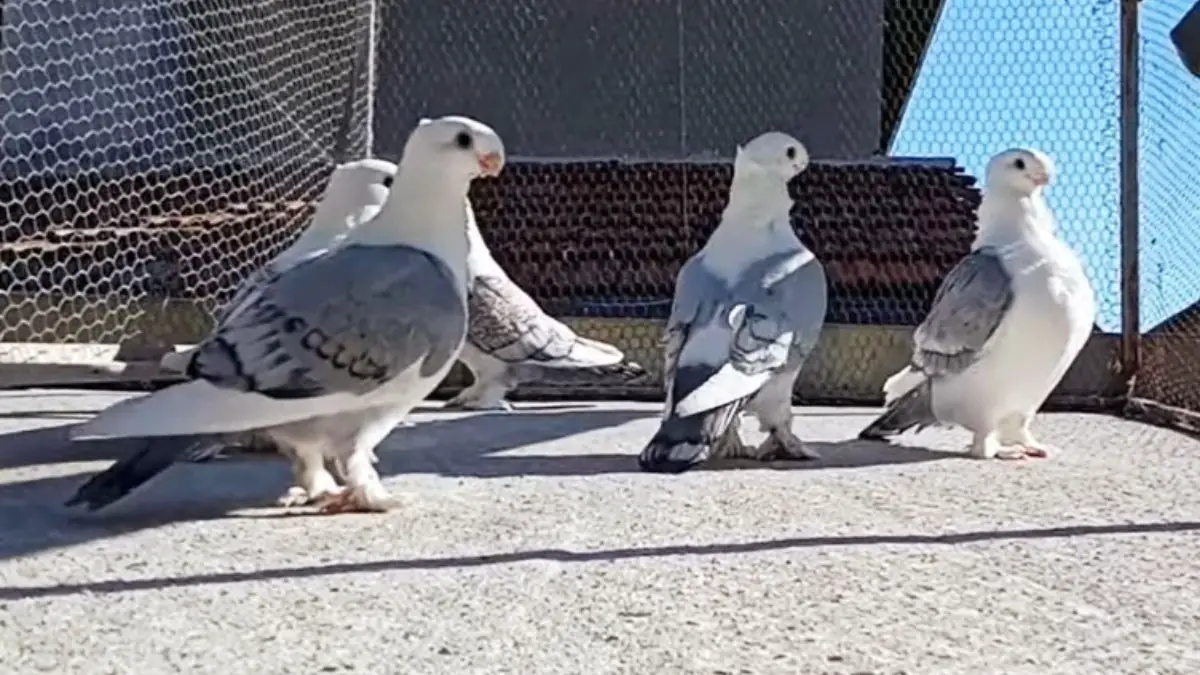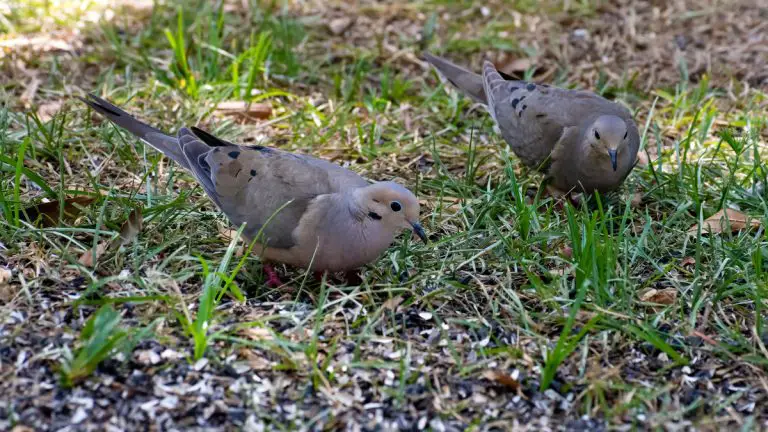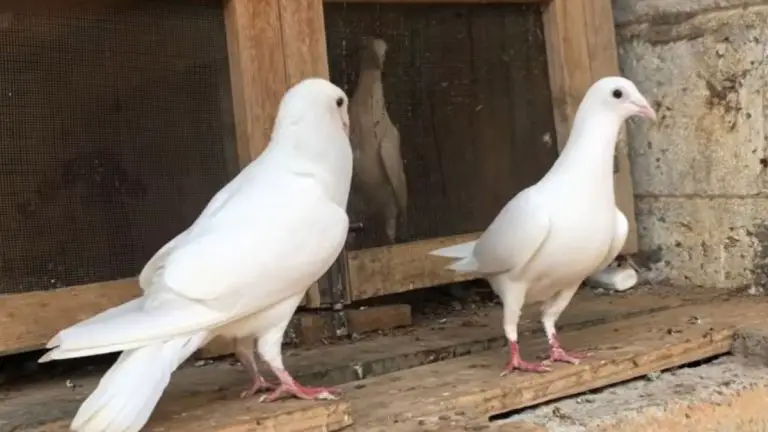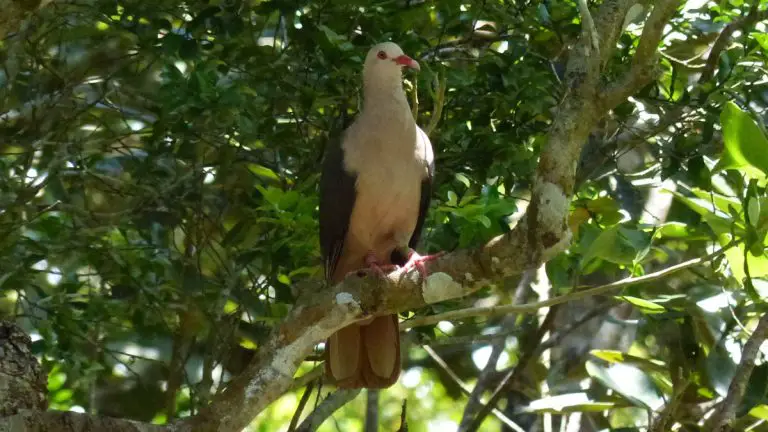Oriental Frill Pigeon: Origin, Appearance, Behavior, Care, And More
The oriental frill pigeon is a common breed in bird shows around the world. And tills easy to see why—its breast frill feathers and overall beautiful body makes it one of the most beautiful fancy pigeon breed.
The bird is also calm and docile, which endears it among pigeon fanciers and enthusiasts who wish to keep it as a pet.
Below, you’ll discover more details about the oriental frill pigeon breed. We’ll take a closer look at its history and origin, physical description, behavior, temperament, what it eats, its suitability as a pet, and tips for successful breeding.
Oriental Frill Quick Facts:
| Scientific name | Columba livia domestica |
| Other names | Hünkari (Turkish, meaning Sultan’s bird) |
| Breed name | Oriental Frill |
| Origin | Turkey |
| Breed purpose | Exhibition, pets |
| Size | Medium |
| Weight | 310 to 340 grams |
| Flying ability | Good |
| Cost | $50 to $200 |
| Lifespan | 10+ years |
Origin and history
The oriental frill pigeon originated in Turkey, where it was specially bred by Ottoman sultans in Manisa Palace in early 1800s.
The bird was later imported to the United States and Europe in the late 1800s where it became a popular show bird.
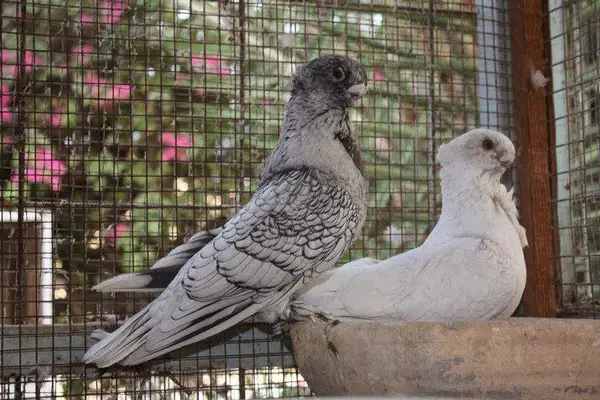
Like many other domesticated pigeons, this pigeon was developed after years of selective breeding.
The bird today exists in several variations based on color and markings, with the most common varieties being satinettes and blondinettes.
However, the original breed is still preserved and goes by the name classic, old style, or old-fashioned oriental frill.
Appearance
The oriental frill pigeon is a medium-sized fancy pigeon whose most distinctive feature is a frill of feathers on its breast, which exude elegance.
These feathers are usually longer and thicker than the feathers covering the rest of the bird’s body. They can appear loose or tight depending on the breed of the bird.
This pigeon has a round head and a pretty short and broad beak. Its forehead appears arched from the beak to its created peak.
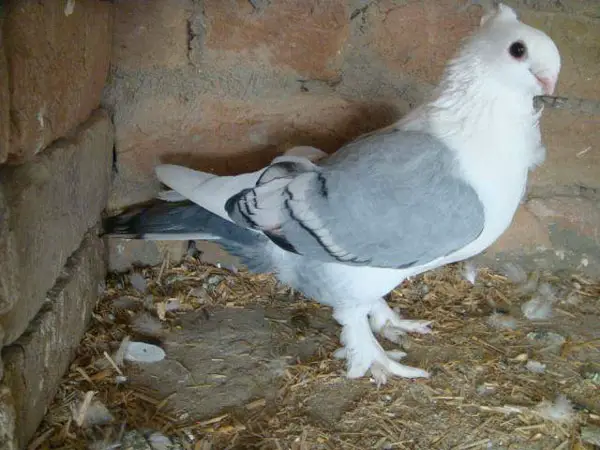
It has large and round eyes, a short and stocky neck, broad breast, and strong wings. Its overall body looks compact and muscular.
Its feathers have an overall smooth and soft appearance which adds to the bird’s overall refined and elegant appearance.
The bird has a white tail and its short legs are covered with grouse muffs
Like other domesticated pigeons, this breed comes in a variety of colors and markings. The most popular ones include blue, black, white, and red.
Behavior
The oriental frill pigeon is a calm and gentle bird, which makes it popular among pigeon financers and enthusiasts.
This bird is quite gentle and easygoing, which makes it well-suited as a pet.
Moreover, this bird is social. This means it not only gets along well but also enjoys the company of other pigeons. It will enjoy your interaction as its owner.
The bird isn’t aggressive to other types of birds, making it suitable for housing in lofts/aviaries with different bird species.

However, the bird isn’t a good flyer. This is due to the frill composition which can make navigation through the air a bit challenging.
Nonetheless, the bird is a great climber and will easily move around their loft.
As with other pigeons, these birds let out soft coos when communicating with fellow pigeons.
Diet
This pigeon’s diet is pretty much the same as that of other domesticated pigeons. It requires seeds, grains, and fresh veggies in its diet. It also requires clean and fresh water daily.
We advise you to get high-quality pigeon feed that contains the right mix of grains and seeds. This will provide the essential nutrients required by the bird; body.
Besides the commercial feed, you should also give your birds fresh veggies and (occasionally) fruits to further ensure your birds obtain all the essential nutrients.
Clean and fresh water is also necessary as the pigeon generally love drinking water. Make sure you clean the water dish every day and refill it with clean water.
Oriental frill pigeon as a pet
The oriental frill pigeon will make a good pet for any bird enthusiast due to its calm and docile nature. Plus, its friendly nature makes it a perfect addition to your flock without worrying about fights.
Though this pigeon isn’t too demanding when it comes to taking care of it, there are certain things you must do to keep it in good health.
Firstly, you should provide it with a comfortable and spacious living space.
You should also regally clean this space to prevent the buildup of disease-causing bacteria or dust and debris that may result in respiratory infections.
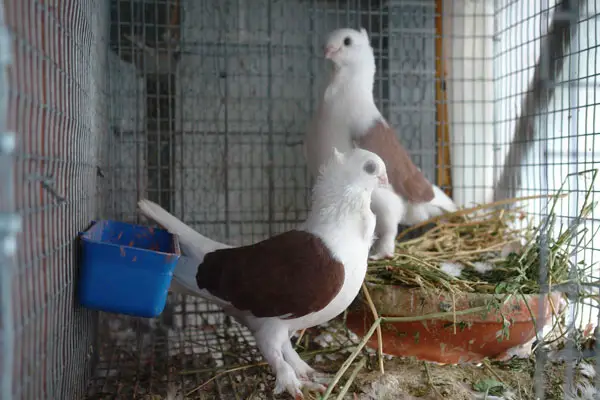
Equip the bird’s loft with enough perches for all your birds, nesting boxes, and food and water dishes.
Provide your birds with a healthy and nutritious diet as discussed in our previous section.
Don’t forget to keep your bird properly hydrated by providing it with clean and fresh water daily.
Note: Any leftover foods and water should be removed from the loft before the bird can soil it or attract mold which can make your bird ill.
Having an avian vet examine your bird regularly is also recommended. This helps keep the bird healthy and free of illness which can reduce its life quality and even cut short its lifespan.
Breeding
The breeding process in oriental frill pigeons is quite straightforward and not different from that of other domesticated pigeon breeds.
The male pigeon starts by courting the female through body signs such as puffing up their chest or vocalizations such as cooing.
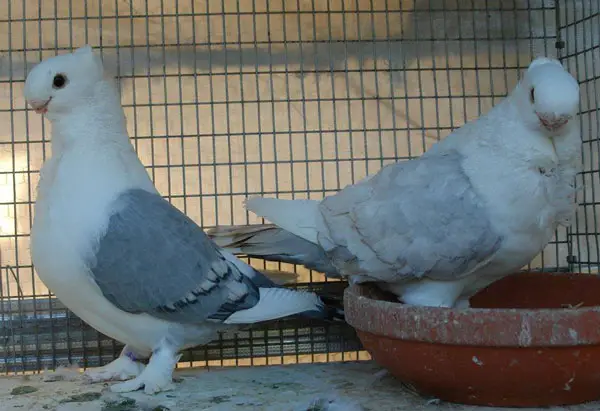
When the female shows interest in the male, they mate and the female proceeds to lay around 2 eggs per clutch in her nesting box. The birds will then incubate the eggs for around 17-19 days until they hatch into young chicks
However, you should ensure you provide your birds with clean and comfortable nesting sites to increase breeding success.
keep in mind that the bird’s frill feathers can make mating problematic. The frill can easily get in the way and get tangled, leading to possible injuries or death of involved birds.
Breeders usually find their way around this by pairing birds with looser frills for mating.
Price
Oriental frill pigeon average cost is around 50 to 200. Sometimes it can be more. The cost of this bird can be affected by a variety of factors including the bird’s breed quality, pedigree, your location, and which breeder you buy from
As we always advise you, take your time to find a reputable breeder with a track record of raising high-quality birds. This way, you can rest assured you’ll be getting a high-quality and healthy bird at a fair price.
Lifespan
Oriental frill pigeon can live for around 10 years. However, the exact number of years this bird lives will depend on how you take care of it. The better the level of care you provide, the longer it will stay around.

That said, you can increase your bird’s lifespan by offering it a proper diet, housing it in a clean and spacious loft or aviary, and regularly taking it to a vet for checkups.
If you’re a fan of fancy pigeon breeds, you might be interested in our articles on Old Dutch Capuchine pigeons and Norwich Cropper pigeons. Our article on Old Dutch Capuchine pigeons explores the breed’s unique features and provides guidance on how to raise and care for them. Meanwhile, our article on Norwich Cropper pigeons provides an in-depth look at the breed’s history, characteristics, and care, including tips on feeding and breeding. Don’t forget to also check out our article on Oriental Frill pigeons for more information on this fascinating breed.Final Verdict
The oriental frill pigeon is one of Turkey’s finest breeds whose elegance made even the Sultan fall for it. Its beauty also makes it a popular bird show in various pigeon exhibitions around the world. The bird is calm, docile, and affectionate which makes it suitable for keeping as a pet. It’s pretty easy to care for in captivity and only requires a healthy diet, a healthy living space, and regular vet care. With proper care, this bird will live for close to 10 years or more!
